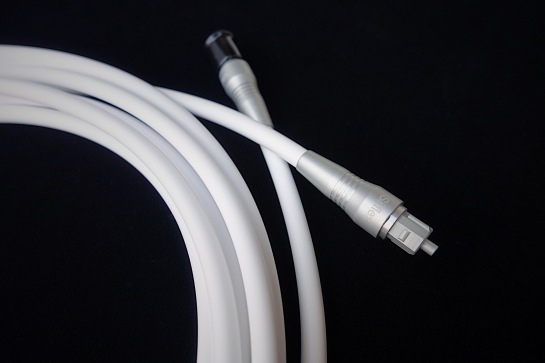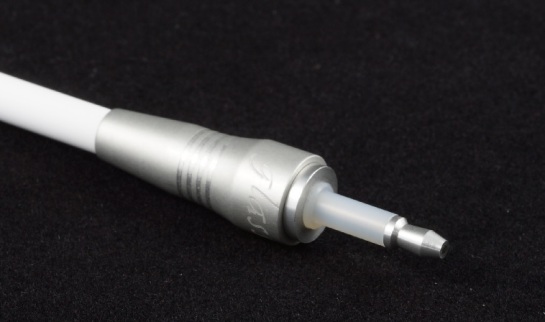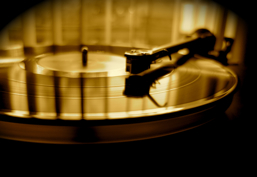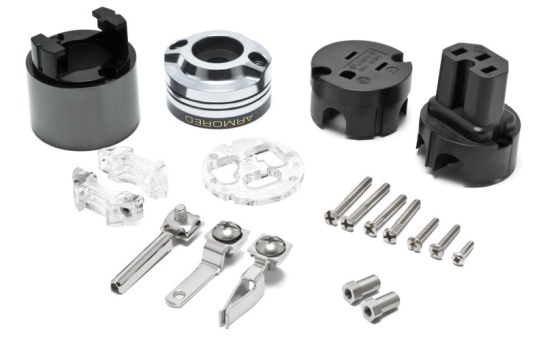
Lifatec Silflex glass optical cable
The transmission of digital audio signals has evolved and improved over the years, resulting in several standard formats for both consumers and professionals. When Sony and Phillips were creating the Red Book CD standard they also included an option for digital audio to be transported between components. While the S/PDIF (Sony Philips Digital Interface) standard was created using coaxial cables (electrical voltages over copper) with RCA connectors, Toshiba proposed a novel solution. Optical light emitted from a red LED was used to create binary pulses that distinguished digital 1’s and 0’s.
Toslink, or more accurately EIAJ optical, is the standard for using collimated light in the transmission of digital audio. Optical fibers are used as circular dielectric wave-guides that transport optical energy and information.
Early forms of this technology suffered from jitter (phase noise from inaccurate clocking) and data errors or drop outs from bandwidth-limited optical cables. Using digital audio chips with improved clocking and digital inputs aimed at reducing jitter is a good start, but to ensure those binary pulses of light reach your downstream component (i.e. DAC) without error requires a cable capable of delivering the full bandwidth spec of the Toslink standard.

- Lifatec custom machined Toslink connectors
While I use AES digital connections in much of my professional audio work, Toslink optical interfaces are often the only available digital input/output for many consumer devices. Apple TV, Playstation, Roku, and most flat screen TV’s only provide optical outputs. With mixed results from Toslink cables made of plastic, I began researching Toslink cables made from glass fiber strands.
After some digging, I stumbled upon LiFaTeC® GmbH, and their North American partner Lifatec USA. The American firm specializes in using optical borosilicate fibers in lighting and sensing products for the medical market, and since 2000 Lifatec USA has been manufacturing glass Toslink cables in Elbridge New York – named the Silflex glass cables.
To achieve a bandwidth beyond the Toslink spec, Lifatec uses 470 glass fiber optic strands in the Silflex glass cables. These glass fibers are custom built specifically for audio data applications. Keeping these strands in place is a smooth outer jacket that encases the fine fibers called Optisilk™. Before terminating the glass strands, the ends are bonded together and polished to a 1 micron optical finish (including the connector ferrule). Then, a custom machined Toslink connector that is both robust and lightweight ensures a tight connection without light leakage.

Lifatec glass optical cable with mini Toslink connectors on one end (Apple Laptops)
For my testing, a 10 ft Lifatec Silflex cable was used to link digital audio sources with digital to analog converters. I used my Playstation and a Blu-Ray player’s optical output to send digital audio data to several DACs for testing. All of my DACs quickly locked to the incoming signals without a hiccup. Sonically, the sound of the Silflex glass cable was clear and transparent, imparting no sound of it’s own. The most important difference I found, when compared to other optical cables, was the tight fitting connector in the Lifatec cables. I used one optical cable where the manufacturer thought it was a good idea to machine a Toslink connector with an unnecessary amount of bulk, which added weight. This inferior connector (from a popular audiophile manufacturer) would easily fall out of the female Toslink socket, not so with the Lifatec cable.

The custom machined Lifatec Toslink connector is both lightweight and tight fitting
After spending some time with these cables in my system, it became clear that the Lifatec cable was a well engineered product for optical audio transmission. Fine borosilicate fibers and smooth outer sleeving allow the cable to flex and fit around components with ease. The finely polished ends ensure a strong optical signal, and the robust/lightweight connectors prevent any light leakage. It is rare to find such a well thought out cable with quality in every part of the build. It’s even less common to find these high-end custom designs at real world prices. Without hesitation, it is my pleasure to recommend the Lifatec Silflex cable for all your optical audio connections.
Happy Listening!






